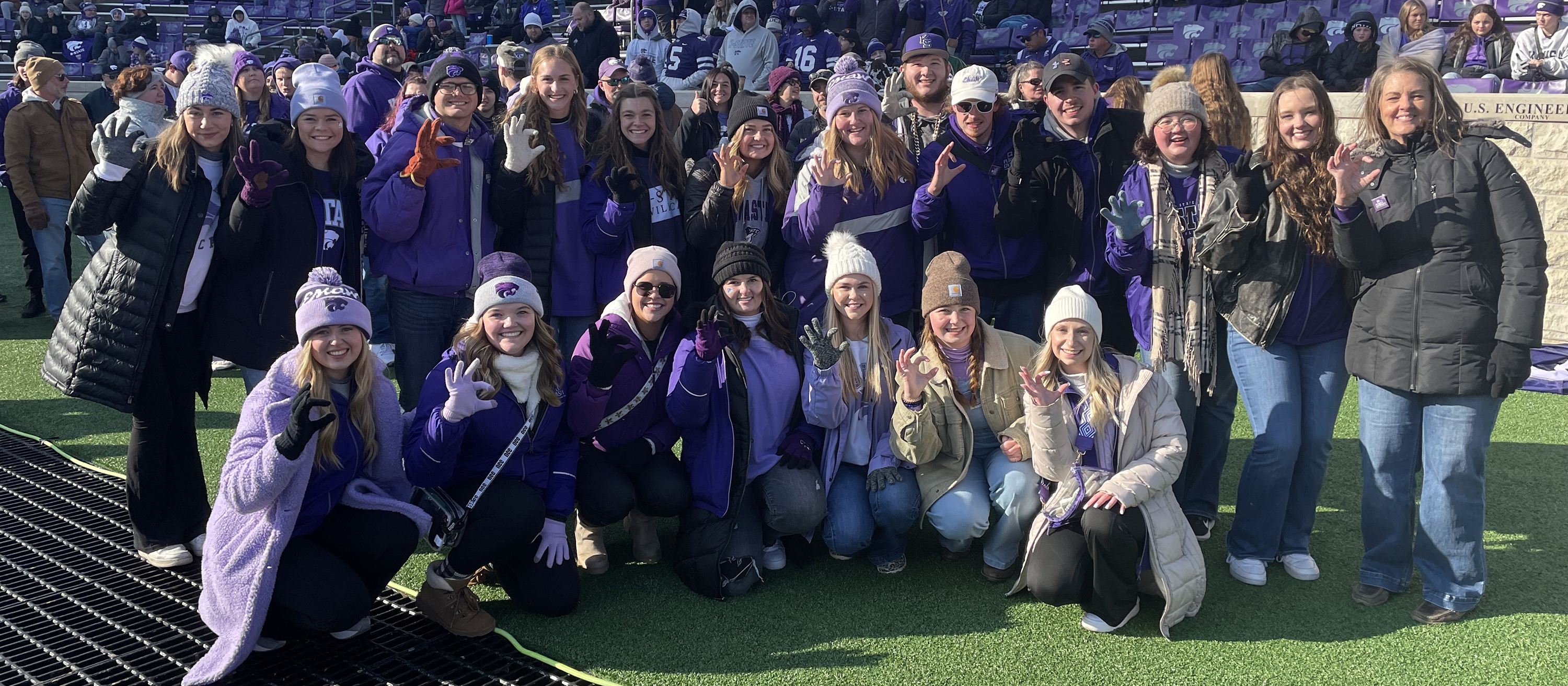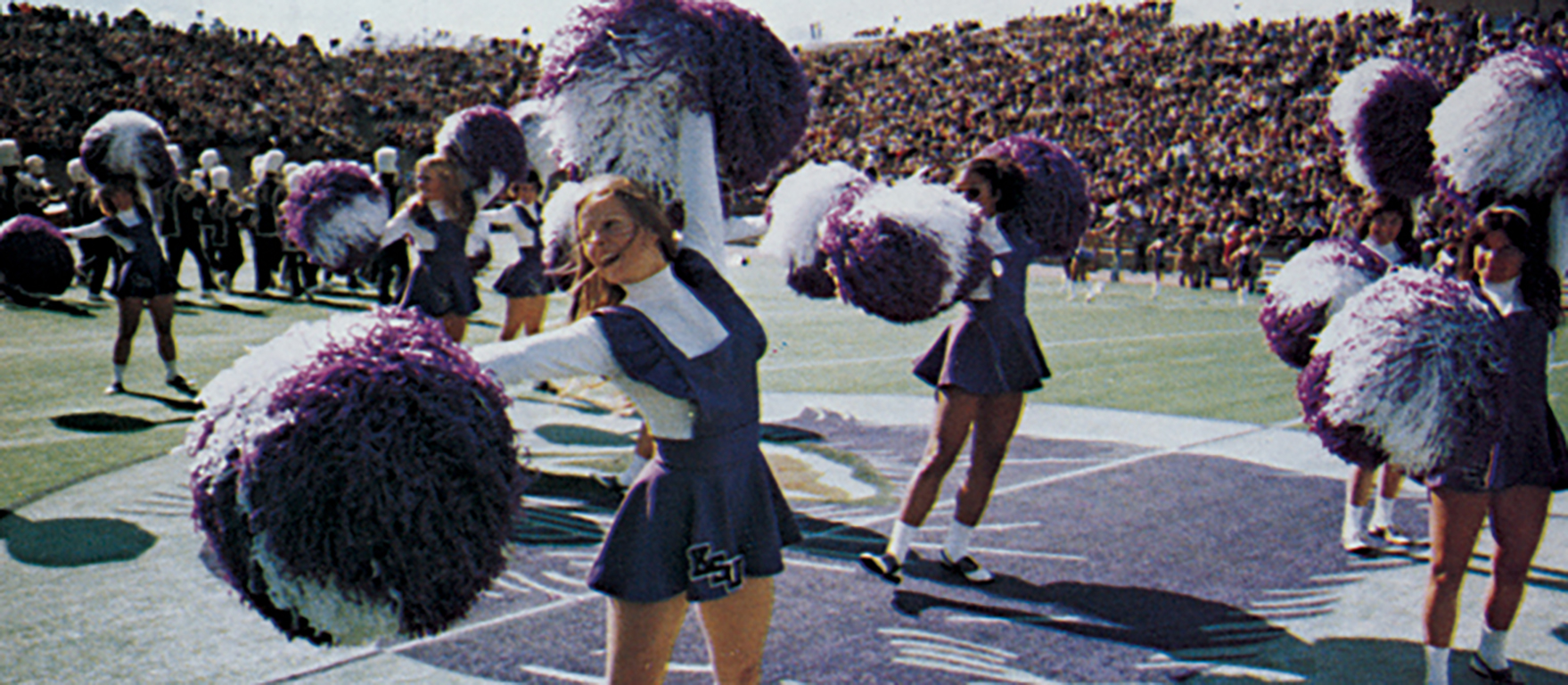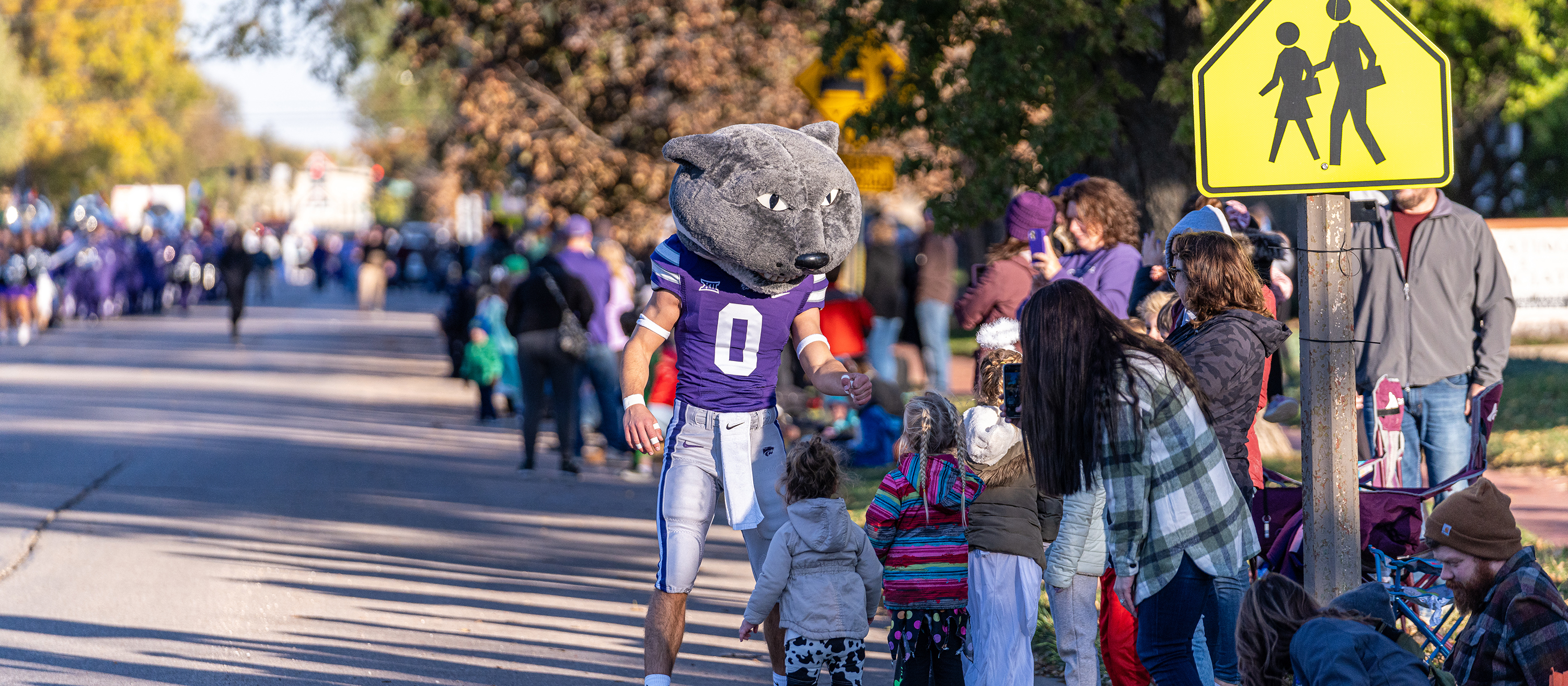About Homecoming
Homecoming is one of K-State's greatest traditions. Throughout Homecoming week, students
compete in various events to generate K-State spirit. Homecoming traditions once included a Homecoming queen, yard art, house decorations
and body building. In recent years, activities have included designing spirit banners, performing group
chants in Bramlage Coliseum, a Paint the 'Ville contest, building floats for the Friday
afternoon parade, and a pep rally.
2024 Student Homecoming Committee

Members of the Student Homecoming Committee work hard throughout the year to make
Homecoming week successful. They meet weekly during the fall to plan activities and events.
• Help plan and execute Homecoming events
• Work alongside passionate K-Staters who want to carry on K-State’s greatest traditions
• Vote on the Homecoming theme
• Promote Homecoming on campus and build excitement
2024 Committee Members:
Chris Alka
Claire Bankes
Andrew Bergmeier
Hayden Bracken
Rylee Coy
Sophia Glanville
Lauren Goodheart
Zoe Hardenbrook
Addison Hasenbank
Sean Hoffmans
Avery Johnson
Heidi Meyer
Timothy Miller
Erik Moore
Makayla More
Brett Morris
Aubrey Naasz
Jill Niblock
Landry O'Bryan
Lakota Persing
Emily Pray
Austin Rios
Marcelina Rivera
Malee Rutherford
Byron Sides
Kerston Sipes
Margot Stewart
Linley Wilson
Jody Zimmerman
View past committee members
Homecoming History

The first Kansas State University Homecoming occurred in 1915, when football Coach
“Jawn” Bender called on loyal alumni to come home and show their support when the
University of Kansas came to town. Then, as today, the K-State Alumni Association
played a key role in that first Homecoming by selling game tickets to alumni and planning
a meal for the returning graduates.
Before the Student Homecoming Committee was created, many Homecoming activities were planned by Blue Key senior honorary
starting in 1936 as coordinator of the dance and first queen competition. Jean Underwood
Robinson ’39 wore the first crown.
Besides the alumni dinners, Homecoming in the early years consisted of mainly the
game and a pep rally. One account reported students, the marching band and others
meeting the Jayhawk band and students at the train depot and accompanying them to
Memorial Stadium.
In 1923, the first house decorations became a tradition, followed by the first parade
in 1932. The Wareham Hotel and Avalon Ballroom hosted many Homecoming dances. The
1938 event celebrated Kansas State College’s 75th anniversary with a 2-mile-long parade
spotlighting floats depicting the development of the college.
The 1947 Homecoming was termed the biggest media event in the history of the college
and city of Manhattan. After leading the victorious end of the war in Europe, then-Gen.
Dwight Eisenhower accepted the invitation of his brother, university President Milton
Eisenhower ’24, to be a guest of the college.
Homecoming events from the 1940s through the 1960s continued many traditional events,
such as house decorations, parades and floats, dances, pep rallies and the queen selection.
The Vietnam War and women’s movement challenged many students to re-evaluate priorities,
and Homecoming suffered from a lack of student participation in the first half of
the 1970s. Ultimately, the royalty competition ended.
In 1977, Amy Button Renz '76, '86 was hired at the Alumni Association to involve more
students in the organization. She helped revitalize this Homecoming tradition with
a new twist. Rather than select queens, students elected two K-State Student Ambassadors
to represent them at alumni and university events. Stan Watt ’78 and Shari Morford
Hildebrand ’79 became the first ambassadors.
Renz worked with Blue Key to help with Homecoming. Some of the 1980s competitions
among student groups included Yell Like Hell and Body Building, which involved original
cheers and human pyramids. The former later was renamed Pant the Chant and the human
pyramids have since ceased.
Blue Key relinquished its event coordination to the Alumni Association in 1991, at
which time the All-University Homecoming Committee assumed that role.
Some events featured since 2000 include the Wildcat Request Live dance competition,
the Crazy Cat Kickoff games and an alumni tailgate competition.
Finally, philanthropy has been another Homecoming element. In 1952, for example, sororities
donated to a polio fund rather than do house decorations. Since 2003, the annual Homecoming
Philanthropy 5K Run/Walk has supported several charities.
— Excerpted from an article by Tim Lindemuth ’77, originally appearing in the fall
2015 issue of K-Stater magazine

